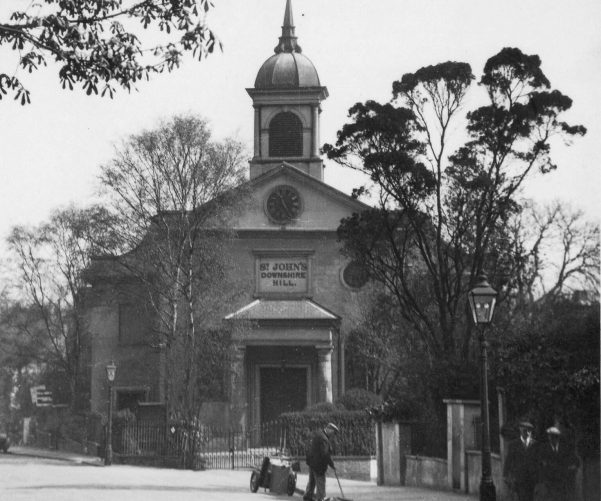Welcome to our church building in the heart of Hampstead – one of London’s most picturesque areas. Our building has beautiful architecture and an exciting and, at times, controversial history, which you can read about here. Beautiful though it is, this building is not the church. In the Bible, the word translated ‘church’ is used to refer to the community of God’s people – those who have received forgiveness and new life through the death and resurrection of Jesus. This building is a place for God’s people to meet to pray, sing, encourage each other and hear teaching from His word, the Bible.
Origins
 In 1813, the land on which the building stands was bought by a distinctive trio: builder William Woods, lawyer Edward Carlisle and James Curry, a Christian minister who financed the venture and would take charge of the church when the building was finished. St John’s is one of a number of churches dating from the 18th and 19th centuries that were privately financed in this way, rather than being under the control of the parish church. Often, such churches were funded by pew rents (this may be the reason for the distinctive box-shaped pews in the main church hall) and were owned or rented by a minister who was eager to preach, but be free from the responsibilities of a parish. Once the building was completed in 1823, the first service was held on 26 October of that year. From the 1840s, the church grew as a result of a settled ministry and, at one point, had a close association with the now defunct Downshire Hill School, as well as with overseas Christian mission work. Thus, from its earliest history, St John’s was founded within an Evangelical tradition – to preach the good news about Jesus Christ clearly and faithfully from the Bible to all who might enter its doors.
In 1813, the land on which the building stands was bought by a distinctive trio: builder William Woods, lawyer Edward Carlisle and James Curry, a Christian minister who financed the venture and would take charge of the church when the building was finished. St John’s is one of a number of churches dating from the 18th and 19th centuries that were privately financed in this way, rather than being under the control of the parish church. Often, such churches were funded by pew rents (this may be the reason for the distinctive box-shaped pews in the main church hall) and were owned or rented by a minister who was eager to preach, but be free from the responsibilities of a parish. Once the building was completed in 1823, the first service was held on 26 October of that year. From the 1840s, the church grew as a result of a settled ministry and, at one point, had a close association with the now defunct Downshire Hill School, as well as with overseas Christian mission work. Thus, from its earliest history, St John’s was founded within an Evangelical tradition – to preach the good news about Jesus Christ clearly and faithfully from the Bible to all who might enter its doors.
New Ministers
and New Controversies
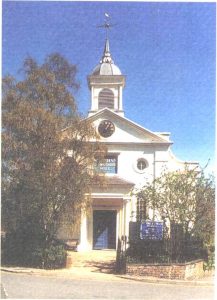 Curry died soon after the church’s opening, so the first minister of St John’s was the Classical scholar William Harness, a friend of the poet Byron. After Harness moved on, a series of ministers remained for only a short time, before the copyhold of the chapel was bought by John Wilcox. Wilcox admired George Whitefield, a dynamic and influential preacher who was a key figure in the upsurge in Christian commitment in Britain and America in the 18th century. Like Whitefield, Wilcox was the son of a Gloucester inn keeper, who had then studied at Oxford on a scholarship. He saw in Downshire Hill the ideal place to carry on Whitefield’s legacy of preaching eternal life, forgiveness and relationship with God through Jesus. Unfortunately, Wilcox faced opposition from another local minister, Samuel White, because of both his humble origins and his lack of commitment to the state-established Church of England. White seems to have accused Wilcox of neglecting the two churches in which he already ministered. He also charged him with illegally officiating in a private chapel without the consent of the local parish minister. The bishop’s court ruled with White, but local feeling was with Wilcox. The poet John Keats, who was living just down the road at the time, wrote: “Here is [White] quarrelling with the world[;] he is in the wrong by this same token.”
Curry died soon after the church’s opening, so the first minister of St John’s was the Classical scholar William Harness, a friend of the poet Byron. After Harness moved on, a series of ministers remained for only a short time, before the copyhold of the chapel was bought by John Wilcox. Wilcox admired George Whitefield, a dynamic and influential preacher who was a key figure in the upsurge in Christian commitment in Britain and America in the 18th century. Like Whitefield, Wilcox was the son of a Gloucester inn keeper, who had then studied at Oxford on a scholarship. He saw in Downshire Hill the ideal place to carry on Whitefield’s legacy of preaching eternal life, forgiveness and relationship with God through Jesus. Unfortunately, Wilcox faced opposition from another local minister, Samuel White, because of both his humble origins and his lack of commitment to the state-established Church of England. White seems to have accused Wilcox of neglecting the two churches in which he already ministered. He also charged him with illegally officiating in a private chapel without the consent of the local parish minister. The bishop’s court ruled with White, but local feeling was with Wilcox. The poet John Keats, who was living just down the road at the time, wrote: “Here is [White] quarrelling with the world[;] he is in the wrong by this same token.”
International Connections
In 1872, some years after the Wilcox saga, Henry Wright became minister and increased the church’s involvement in international mission. Wright himself was associated with the Church Missionary Society (CMS), and often used missionaries as his curates when they returned to England. Another of our ministers, Jacob Jocz, who was born in pre-WWI Russia, served here from 1947 to 1956, became President of the International Hebrew Christian Alliance and then was Professor of Systematic Theology at Wycliffe College, Toronto. Over the years St John’s has also been linked to ministries in Chile, Bolivia, Peru, Egypt, Borneo, Rwanda, India and South Africa. Today we have links to Christian work in Italy (Forte Torre in Bologna), East Asia, the Middle East, Sri Lanka and Uganda and congregation members from more than 20 countries around the world across Europe, Asia, the Americas, Africa and Australasia. Closer to home, members leaving London have gone out to other parts of the UK and our current links include St Clement’s, Manchester.
Architecture and Key Features
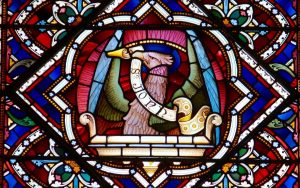 The building, with its Regency stuccoed and cream painted façade, is typical of churches of that period in the New England region of the USA. Interesting features include its Doric porch and double staircases vestibule as well as the East Window, dating from 1882, which depicts the Eagle of St John. Under it the reredos frames the Ten Commandments, the Lord’s Prayer and the Apostles’ Creed. During a restoration project in the late 1960s, a frieze of biblical texts, which had been obliterated in 1923, was rediscovered decorating the gallery and reredos and repainted in the original striking gold lettering. The Bevington & Sons organ in the West Gallery was built in 1873 and installed in 1880, replacing a smaller one.
The building, with its Regency stuccoed and cream painted façade, is typical of churches of that period in the New England region of the USA. Interesting features include its Doric porch and double staircases vestibule as well as the East Window, dating from 1882, which depicts the Eagle of St John. Under it the reredos frames the Ten Commandments, the Lord’s Prayer and the Apostles’ Creed. During a restoration project in the late 1960s, a frieze of biblical texts, which had been obliterated in 1923, was rediscovered decorating the gallery and reredos and repainted in the original striking gold lettering. The Bevington & Sons organ in the West Gallery was built in 1873 and installed in 1880, replacing a smaller one.
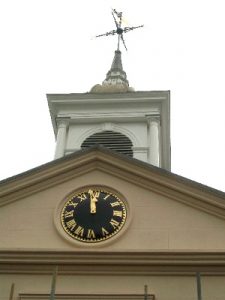 The wooden box pews, which line the sides of the church, are those for which the first congregation and successive generations paid pew rents until the early 1950s and St John’s is one of the few churches in England retaining original examples of this seating. Below the bellcote outside, the distinctive black and gold clock on the front of the building is as old as the church; made by John Moore and Son of Clerkenwell in 1823, its simple bold design is typical of timepieces of that period.
The wooden box pews, which line the sides of the church, are those for which the first congregation and successive generations paid pew rents until the early 1950s and St John’s is one of the few churches in England retaining original examples of this seating. Below the bellcote outside, the distinctive black and gold clock on the front of the building is as old as the church; made by John Moore and Son of Clerkenwell in 1823, its simple bold design is typical of timepieces of that period.
The Present Day
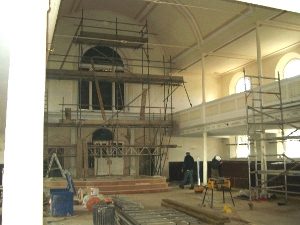 As a proprietary chapel, St John’s is recognised as a church within the London Diocese of the Church of England but has complete independence in financial matters. It receives no support from and makes no contribution to Diocesan Funds. It is entirely self supporting and all costs, including staff and building costs, are borne by the congregation, which has owned the building since 2003 when they bought it from the family trust that had owned it and leased it to them since the First World War.
As a proprietary chapel, St John’s is recognised as a church within the London Diocese of the Church of England but has complete independence in financial matters. It receives no support from and makes no contribution to Diocesan Funds. It is entirely self supporting and all costs, including staff and building costs, are borne by the congregation, which has owned the building since 2003 when they bought it from the family trust that had owned it and leased it to them since the First World War.
Grade I listed by English Heritage, the building has been subject to a number of restoration projects. The most recent was completed in September 2004 when key structural problems, most notably a lack of foundations, were finally addressed by an extensive £2.5 million project to underpin the building and, in the process, add an undercroft that extended the church’s facilities considerably. The continuing history of this lovely building continues to be a great testament to God’s wonderful grace in Jesus Christ through and to His people in Hampstead and beyond.
Hiring the building
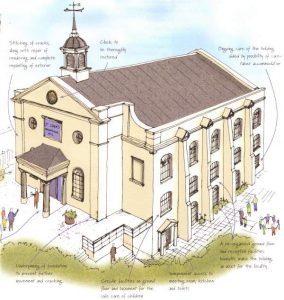 Both the main auditorium and the wood-floored Undercroft are frequently hired out for various functions, including children’s birthday parties, concerts, drama workshops etc. If you would be interested in hiring the building, visit the hall hire page for further details.
Both the main auditorium and the wood-floored Undercroft are frequently hired out for various functions, including children’s birthday parties, concerts, drama workshops etc. If you would be interested in hiring the building, visit the hall hire page for further details.
